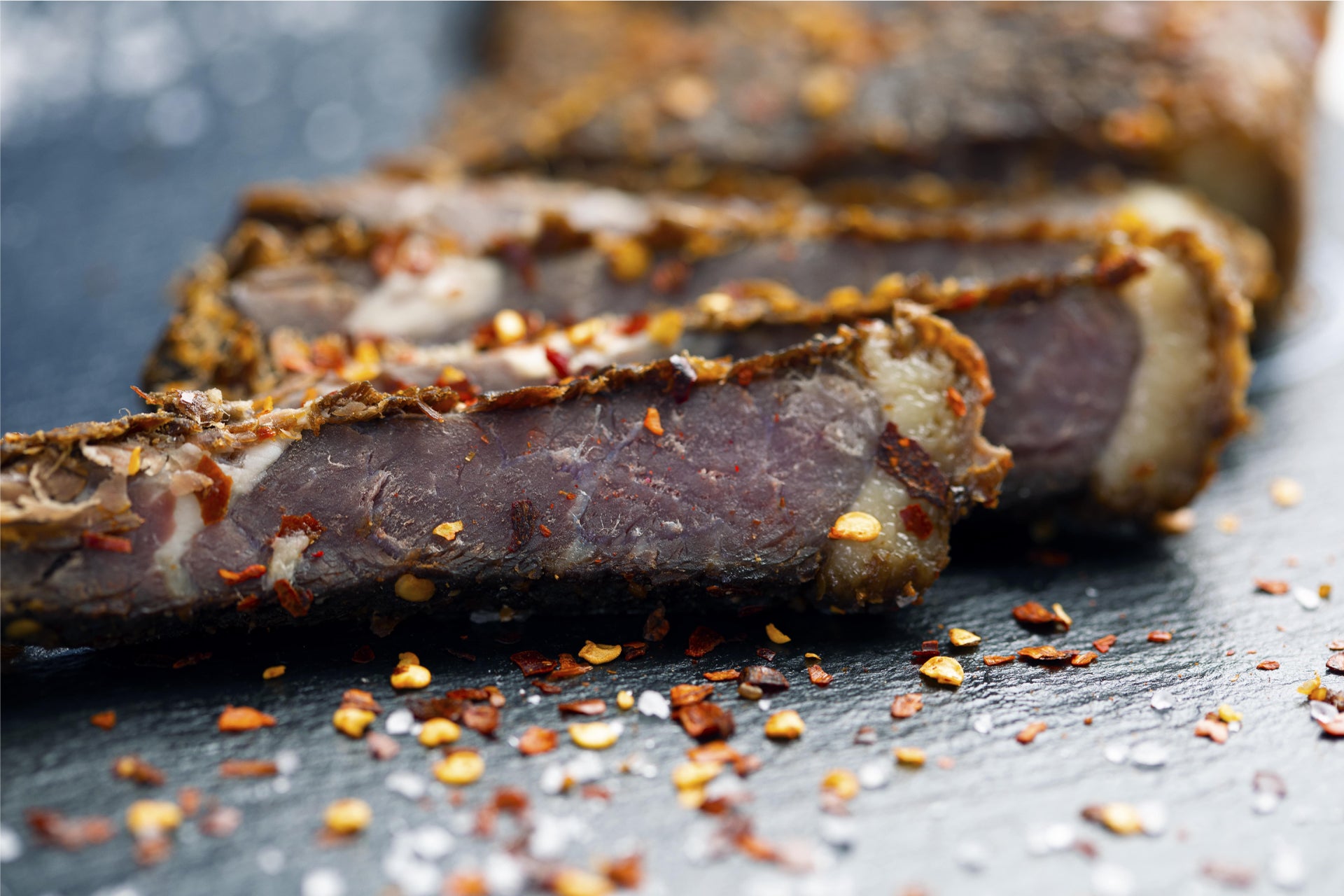Yes, we know that a juicy piece of steak is delicious. And yes, we know that too much of a good thing can be… too much. But while we don’t advocate eating just red meat for breakfast, lunch, and dinner, we do think that including red meat as part of a balanced diet and active lifestyle can be a healthy (and tasty) choice.
In fact, if you’re going to snack at all, opting for some flavoursome air dried meat snacks like our 24 hour-marinated jerky and biltong are a way healthier choice than reaching for a bag of greasy chips or sugary lollies. Keep scrolling to find out more about the surprising health benefits of eating red meat.
Nutritional Benefits of Eating Red Meat
Did you know that red meat and other animal-based foods are excellent sources of not only protein and iron, but also key micronutrients such as calcium, zinc, omega 3 fatty acids, and vitamin B12? Without consuming certain key micronutrients that are abundant in animal-based foods, you might find yourself having a nutrient deficiency and having to supplement. Let’s talk about how each nutrient benefits your body.

This macronutrient not only powers your body, but it also helps you feel fuller for longer, builds and repairs muscle, boosts your metabolism, helps fast track your weight loss, as well as protects your body from getting sick. One of the benefits of eating red meat is that it can easily help you meet your personal protein requirements.
Red meat is one of the best sources of haem iron that your body can easily absorb. This mineral is essential for helping your blood efficiently transport oxygen from the lungs to the rest of the body. When your body receives enough iron through the food you eat, you have more energy and an improved ability to concentrate. Iron also aids in regulating the movements of your GI tract, your body temperature, as well as keeping your body’s immune system in check.
This is another key mineral that helps to prevent you from developing bone degradation issues like osteoporosis and rickets. If you don’t include enough calcium in your diet, your body may begin to draw this mineral from your bones. When this happens, not only do your bones get weaker, you may also feel more irritable, anxious, and down than usual.
Another one of the benefits of eating red meat is its high zinc content. Zinc is a micronutrient that helps your immune system fight off bacteria and illness. It also helps your body make protein and DNA, heal wounds, and regulate your senses of taste and smell.
While fatty fish, nuts, and plant oils are the best sources of omega 3 fatty acids, you can also find them in red meat. These three acids (ALA, EPA, DHA) benefit not just your heart health, but also help regulate your cholesterol levels. blood pressure, and mood.
One of the other nutritional benefits of eating red meat is the amount of vitamin B12 present. This vitamin gives your body a boost in energy while preventing you from developing a type of anemia. It also helps regulate your nervous system.
Health Benefits of Eating Red Meat
For a healthy heart, the Heart Foundation recommends eating lean meat about 1 to 3 times a week. Read more about that in their 2019 published statement “Meat & Heart Healthy Eating” if you’re keen. Current research also advises that each person should eat no more than 350 grams of unprocessed red meat in a week. However, this advice is not a one-size-fits-all solution for everyone.
In fact, the Evidence Review published in the same statement above found that including up to 1 serve of unprocessed red meat a day can be a reasonable choice depending on your overall diet and lifestyle. Just as each person has different energy requirements and health goals based on factors such as your lifestyle, diet, gender, and age, so does the amount of red meat you should consume vary.
Also, did you know that Australian red meat has a higher omega-3 polyunsaturated fatty acid content than U.S. meat? This is mostly because of the different animal diets. Australian red meat tends to come from pasture-fed animals, while animals in the U.S. tend to be grain-fed. Thanks to the abundance of grazing pastures here down under, not only does our grass-fed beef have stronger flavours and textures, but they are also much leaner than if they were grain-fed.
Munch in Moderation
Snacking on some jerky or beef biltong is one of the best ways to enjoy your weekly intake of red meat. If you’re wondering “how is beef jerky made?”, head on over to our blog where we talk more about The Jerky Co’s methods of air drying marinated meat using a recipe that has been passed down for generations. We use only high-quality topside MSA beef that tastes as delicious as it is good for the Aussie meat and livestock industry.
While it can be tempting to serve up a steak for every other dinner and snack on jerky every chance you get, red meat is best consumed in moderation and as part of a healthy, balanced diet to help meet your personal nutritional and energy needs. That being said, we do have tons of meal and snack ideas that include our 24 hour-marinated, air dried, topside MSA beef, so you can look forward to savouring your next serving of red meat.





















